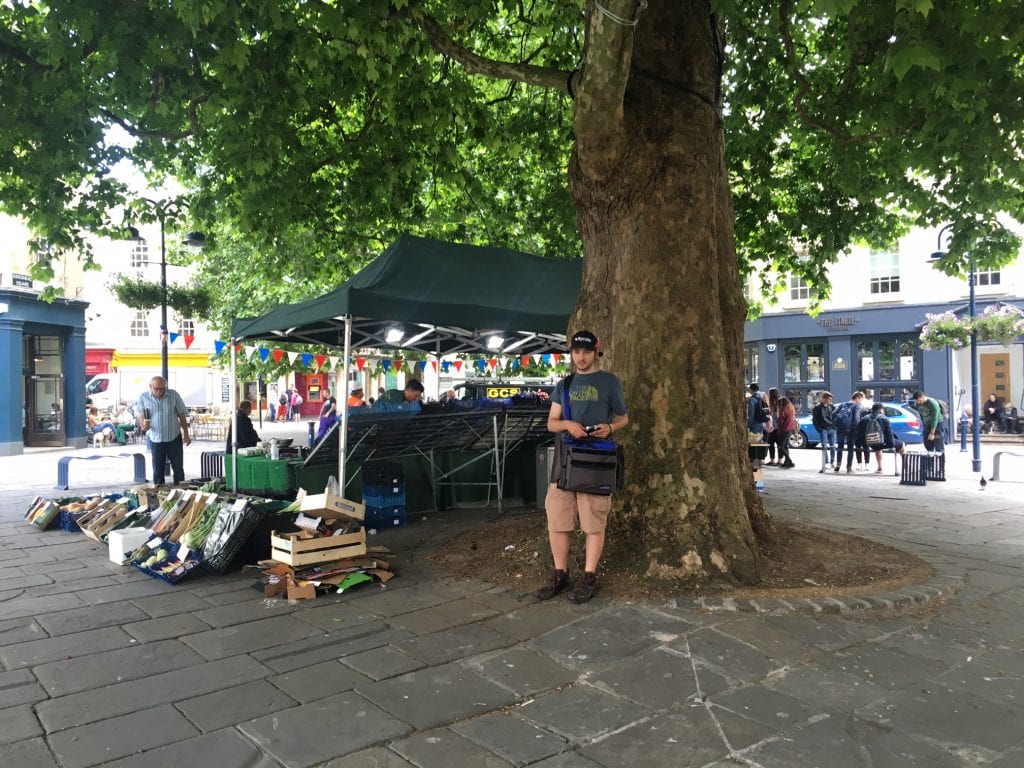This recording trip was all about finding a lively town square ambience for use in our upcoming immersive audiobook The Boy Who Cried Wolf. In my mind I envisioned the reverberation of a closed in square with the odd person passing, maybe someone sweeping the floor, perhaps someone shouting (a gruff farmer accent wouldn’t go amiss) and maybe a market stall or some kind of workshop sounds. The list ends up like some kind of sonic movie set, but these spot sounds can always be added in after if we could just capture that base ambience.
With so many major roads dissecting the UK, finding a town centre free of traffic pollution was always going to be one of our greatest challenges. Even after studying a map of towns in the UK, it was difficult to see where one could go in the 21st century that didn’t have that horribly familiar road-roar seeping in. We were effectively looking for an isolated village, but one with lots of people and life. This began to seem like a big contradiction.
After several hours of deliberating, we suddenly realised we had been looking for completely the wrong sort of place. Contrary to logical thought, we concluded that the most traffic-free place could actually be a pedestrianised city centre. The nearby historic centre of Bath jumped out at us. All major roads divert around the city, which is just large enough to place them out of microphone range. The remaining slow moving city traffic could be blocked off by finding just the right city square to record in at the right time of day.
We arrived early on a Sunday morning in order to scout out the best locations before the city awoke. We would then record the first movements of early rising residents, right up until the tourist-packed busses pulled up near the famed Roman Baths. However upon arriving several problems with our decision became immediately apparent. First off we had to contend with street cleaners. They seemed to be slowly stalking us around the city, that deep, churning, ever present hum vibrating through the cobbled streets.

Searching for the perfect binaural ambience
Eventually their work was done, giving rise to an equally pervasive, natural problem: Seagulls. Bath is at least 20 miles from the sea, but it seems a large colony of seagulls have made it their home. Suddenly it seemed that our version of The Boy Who Cried Wolf might need to have a nautical theme. Luckily by about 10:30 they had stopped crying in unison and we were able to get some nice sounds with two DPA 4060 omnis attached to each ear using the hollowed out frames of some sports earphones.
Across from Bath Abbey I was able to collect some clear early morning chatter until a busker started playing classical guitar (You can listen to this on my soundcloud). Next we moved over to a market stall near Queen square. Here the odd passing car invaded the recordings and the square was too large to create any interesting reverberation. Our final location was on a side street behind Bath Abbey. The church bells started ringing for Sunday Service which created a fantastic atmosphere, but perhaps one too grand for our rustic village story setting.
In all some great binaural recordings made but sadly still nothing usable for our story. This just highlights some of the difficulties encountered when trying to find the right location.

Binaural recording by a fruit n veg stall

